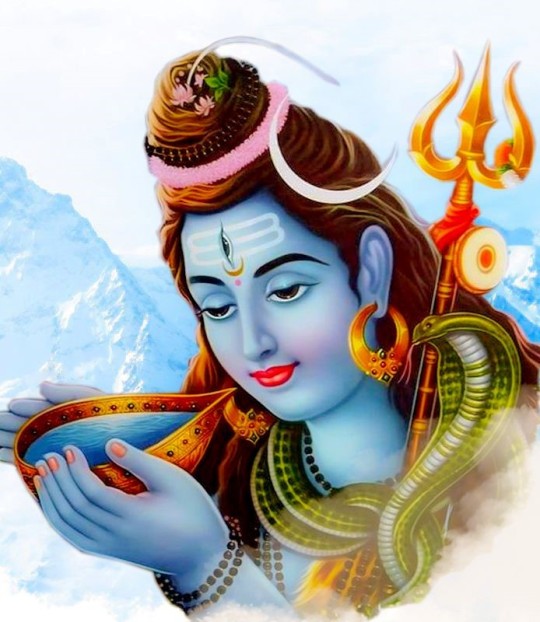#Magh
Text
Divinely Beneficial Knowledge about Lord Shiva (Part I)
Series on Shiva the Supreme!
– Dr. Dhananjay B. Ghare
This article is based on Shiva Purāṇa‘s Vidyeśvara Samhitā.
Śaunakaadika (representative of ‘Śaunaka’ group of sages): Respected Sūta Mahāṛṣi, devotees of every God or Goddess are always
a) curious to know more and more about their believed and respected divine powers and
b) willing to perform devotional activities to please, their Gods…

View On WordPress
#Ashtanga Yoga#Brahma#Culture#Dharma#Magh#Mahashivratri#Mahavakya#Natraja#Parvati#purana#Rajas#Rudra#Saivism#Samadhi#Sattva#Shiva#Shivling#Tamas#Upanishad#Vedas#Vedic#Vedopaṇiśadic#Vishnu
0 notes
Text
0 notes
Text
Maghe Sankranti festival in Nepal is one of the significant celebrations celebrated in the long stretch of Magh.
#maghesankranti #bullfight #chaku #maghi #ghewchaku #magh #Sankranti2023 #sweets
1 note
·
View note
Text
Celtic Mythology | Five Sacred Guardian Trees of Ireland
Tree lore is a suspected ancient school of knowledge with roots stretching back into our earliest symbolic imaginations. The Tree is a common universal, archetypal symbol that can be found in many different traditions around the ancient world. Trees are symbols of physical and spiritual nourishment, transformation and liberation, sustenance, spiritual growth, union and fertility.
The Guardians of…

View On WordPress
#Ancient#Ash#Bile Tortan#Cloughlea#Co. Wicklow#Craeb Daithi#Craeb Uisnig#Daur#Derry#Doire#Eó Mugna#Eó Ruis#Five Celtic Guardian Trees of Ireland#Gerry Chaney Photography#High King of Ireland#Irish Annals#Magh Adhair#Manor Kilbride#Máel Sechnaill#Oak#Sidhe#Yew
19 notes
·
View notes
Text
Celebrating Makar Sankranti in India
Every year Makar Sankranti falls on the 14th or 15th of January, and there’s a good reason for that too. The term “Sankranti” refers to the movement of the Sun from one Zodiac to another, so there are a grand total of 12 Sankrantis. What makes Makar Sankranti special? During Makar Sankranti, the Sun moves from Sagittarius or Dhanu Rashi to Capricorn or Makar Rashi, in numerous ways this signifies a new beginning. The Sun which moves into the Northern Hemisphere leads to longer days and the end of the Indian Winter. It falls during the harvest season, with freshly cut crops offered to gods and subsequently eaten. The period signifies “fertility” and bursting into action after the slow and delirious winter season. It ushers in the “auspicious” part of the year which lasts until Karkata Sankranti which falls somewhere in July. It is also the only festival celebrated going by the solar calendar. The contrast between the cozy western holiday season and the vibrant onset of Hindu fertility is an abrupt transition but goes perfectly with the hopeful nature of the new year.
All over India, Makar Sankranti is celebrated in different ways with each one doing their own thing. 14th/15th January signifies not one or two but many festivals.
In Tamil Nadu, the festival is known as Pongal, which translates to “to boil, overflow” and freshly cut rice is cooked with milk and jaggery. The Tamil version can be traced back to the Chola empire, so roughly around the 9th to 13th century. Spread over three days (and a lesser-known fourth day), each day has its own significance. The first day is known as Bhogi Pongal or Indran and focuses on cleaning the house, as each member dusts and scrubs until every surface is squeaky clean. The second day is called Thai Pongal or Surya Pongal and is the most important day, the Pongal is made and first offered to the gods, then the cattle, and only after that are the family members allowed to have it. The third day is spent grooming and worshipping the cattle.
Uttayaran in Gujarat can only be defined by one word, “vibrant”. Strewn across skies are kites that made for a tapestry. There is an industry revolving around this particular time of the year, as kite sales skyrocket (pun intended) and officials from different countries come to participate in kite competitions. The reason behind flying kites is that being out in the Sun after the winter helps kill germs and be more exposed to Vitamin D. Dishes like Undhiyo that are nearing the end of their season are relished for the last time.
If we go farther North, we come across Lohri, the Punjabi variant of Makar Sankranti. The folklore attached to Lohri is of a man known as Dulla Bhat, who lived during the reign of Emperor Akbar. He used to steal from the rich and distribute it among the poor. In his honor, people sing “Sundar Mundriye” during Lohri. This story is different than the religious and godly myths surrounding the other festivals, and it’s fascinating how a festival honors a man who worked for the needy. Punjab is a largely agrarian state, so the festivities are rooted in harvesting crops. People get together around huge bonfires and eat everything from Chikki to Saro ka Saag.
There are tons of other festivals on this day, in Assam it's called Magh Bihu with games like tekeli-bhonga (pot-breaking) and buffalo fighting taking place. In Bihar, locals have chuda-dahi (beaten rice and yogurt) and a portion of gur (jaggery), and in Bengal, it’s called Poush Sankranti and have sweets like pithe, patishapta, etc. with rice and palm jaggery.
- Priyanshu

Painting Credits: Ladies on a Terrace Kite-fighting, circa 1775.
#india#indian#indian dark academia#indian aesthetic#aesthetic#dark academia#indian culture#desi#desi dark academia#makar sankranti#kites#kite flying#kite festival#pongal#magh bihu#uttarayan#Gujarat#Assam#Punjab#tamil Nadu#lohri#indian festival#indian festivals#festival#festivals
22 notes
·
View notes
Text

I hate it here. Even in AI jake is asking ‘physics of maths’ MF WHY
#someone stop jake please#NOT THE AI#okay to fair this is a sunghoon AI#but i still had jake become my partner for a project and like HE STILL TALKED ABOUT PHYSICS AND MAGHS#MATHS*#I CANT SPELL ANYMORE💔
7 notes
·
View notes
Text
finished the card :)
3 notes
·
View notes
Photo

Prayagraj, India
A sadhu, or holy man, waits to be allotted a temporary tent for the Magh Mela festival
Photograph: Sanjay Kanojia/AFP/Getty Images
#sanjay kanojia#photographer#afp via getty images#prayagraj#india#culture#sadhu#holy man#magh mela festival
3 notes
·
View notes
Text
The fun thing about legendary Armour is I can just transmutate things to properly preview stuff with a makeover kit
4 notes
·
View notes
Text
So in my neighborhood, on the day of Bhogali Bihu, all the families gather on the street to have a friendly neighborhood competition that consists of childish stuff like musical chairs and stuff and it's for all age groups and they even win prizes. Anyways, some people are already out and they've got speakers and mics and shit and my mom's still getting ready. But they're (who are just are neighbours) announcing, or rather demanding that my mom come out quickly because she's the reason this thing happens every year. When I tell you my mom's the main character of this neighborhood, y'all better believe.
2 notes
·
View notes
Text
Samhain and Irish Mythology
Irish mythology was originally a spoken tradition, but much of it was eventually written down in the Middle Ages by Christian monks, who Christianised it to some extent. Nevertheless, these tales may shed some light on what Samhain meant and how it was marked in ancient Ireland.
Irish mythology tells us that Samhain was one of the four seasonal festivals of the year. The 10th-century tale…

View On WordPress
#Aided Chrimthainn maic Fidaig#Annals of the Four Masters#Battle of Magh Tuireadh#Book of Invasions#Cú Chulainn#Dindsenchas#Echtra Neraí#Fionn Mac Cumhaill#King Ailill of Connacht#King Tigernmas#Magh Slécht#Oweynagat#Samhain#Serglige Con Culainn#Táin Bó Cúailnge
29 notes
·
View notes
Text
Magh Budh Pradosh Vrat 2024: प्रदोष व्रत की पूजा में शामिल करें ये चीजें, मिलेगा उत्तम संतान का सुखMagh Budh Pradosh Vrat 2024: सनातन धर्म में प्रदोष व्रत का खास महत्व है। यह महीने में दो बार आता है। यह व्रत पूरी तरह से देवों के देव महादेव की पूजा के लिए समर्पित है।
#Pradosh vrat kab hai 2024#pradosh kab hai#pradosh vrat 2024#budh pradosh vrat 2024#pradosh vrat kab hai#pradosh vrat#magh pradosh 2024 date#budh pradosh vrat katha#pradosh#magh pradosh vrat 2024#Dharm News in Hindi#Dharm Hindi News
0 notes
Text
Jaya Ekadashi 2024

Jaya Ekadashi 2024, a significant Hindu fasting day, holds a revered place in the Hindu calendar. Falling on the 11th day of the bright fortnight (Shukla Paksha) in the month of Magh (magh Ekadashi 2024), it is dedicated to Lord Vishnu and is observed with great devotion and enthusiasm.
Jaya Ekadashi 2024 date:
Jaya Ekadashi 2024 will be observed on Tuesday, 20th February. The fasting for Jaya Ekadashi begins on 19th February 2024 at 8:49 am and concludes on 20th February 2024 at 9:55 am.
The Parana, or the breaking of the fast, should be done on 21st February 2024, between 6:55 am and 9:11 am.
Auspicious Yoga:
Jaya Ekadashi is associated with auspicious yogas such as Preeti, Ayushman, Tripushkar, and Ravi Yoga. These yogas are believed to enhance the benefits of worshiping Lord Vishnu on this day.
Jaya Ekadashi significance:
Jaya Ekadashi is considered a powerful fast that can cleanse one of the sins and grant worldly pleasures.
The month of Magh, in which Jaya Ekadashi falls, is auspicious for the worship of Lord Shiva, adding to the significance of this day.
The fast ends with Parana, ideally done as soon as possible after the end of Dwadashi.
In some South Indian communities, Jaya Ekadashi is also known as Bhoomi Ekadashi (Jaya ekadashi vrat Katha) and Bhishma Ekadashi.
Devotees observe this fast with dedication and perform rituals to seek the blessings of Lord Vishnu for the fulfillment of their desires and spiritual growth.
#jaya ekadashi significance#jaya ekadashi 2024#jaya ekadashi vrat katha#jaya ekadashi vrat vidhi#jaya ekadashi vrat paaran time#jaya ekadashi 2024 date#जया एकादशी 2024#magh ekadashi 2024#जया एकादशी का महत्व#जया एकादशी तिथि 2024#जया एकादशी शुभ योग
0 notes
